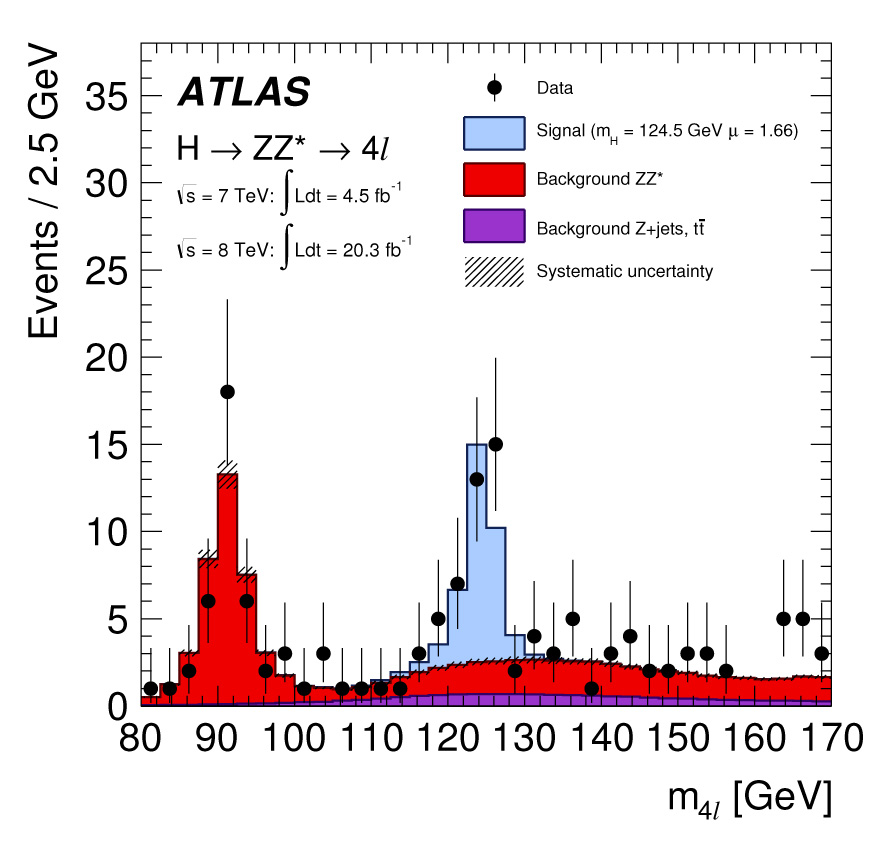Precise measurement of the Higgs boson mass
3 July 2014 | By

The ATLAS Collaboration has analysed its full Run 1 data sample of seven and eight TeV (tera electron Volts) proton-proton collisions delivered by the Large Hadron Collider (LHC), to produce an accurate measurement of the Higgs boson mass. The Higgs boson resonance appears as a narrow peak in the mass spectra of its decays to two photons or to four charged leptons, as shown in the two figures below.
The position of this peak over the smooth background allows ATLAS to measure the resonance’s mass to be 125.36 ± 0.41 GeV, corresponding to about 130 times the mass of the proton, with a precision of about three parts per mille. The dominant uncertainty in the measurement is due to statistical fluctuations. A small instrumental uncertainty has been achieved thanks to extensive calibration work leading to an unprecedented understanding of the ATLAS detector performance. The resulting measurement is among the most precise ones performed by the ATLAS Collaboration. Only two years after its discovery, the mass of the Higgs boson is already known about twice as well as that of the heaviest known particle, the top quark, but still about a factor of 25 and 200 less well than the masses of the W and Z bosons, respectively. During the forthcoming LHC Run 2, and especially after the high-luminosity upgrade of the LHC, the ATLAS and CMS experiments will be able to improve the current measurement by a factor of up to ten.

The Higgs boson mass is a fundamental constant of Nature that is not predicted by the Standard Model of particle physics. Its measurement is required for precise calculations of high-energy processes including the production and decay properties of the Higgs boson itself. The Higgs boson mass is also thought to play an important role for the stability of our universe with respect to quantum fluctuations.



